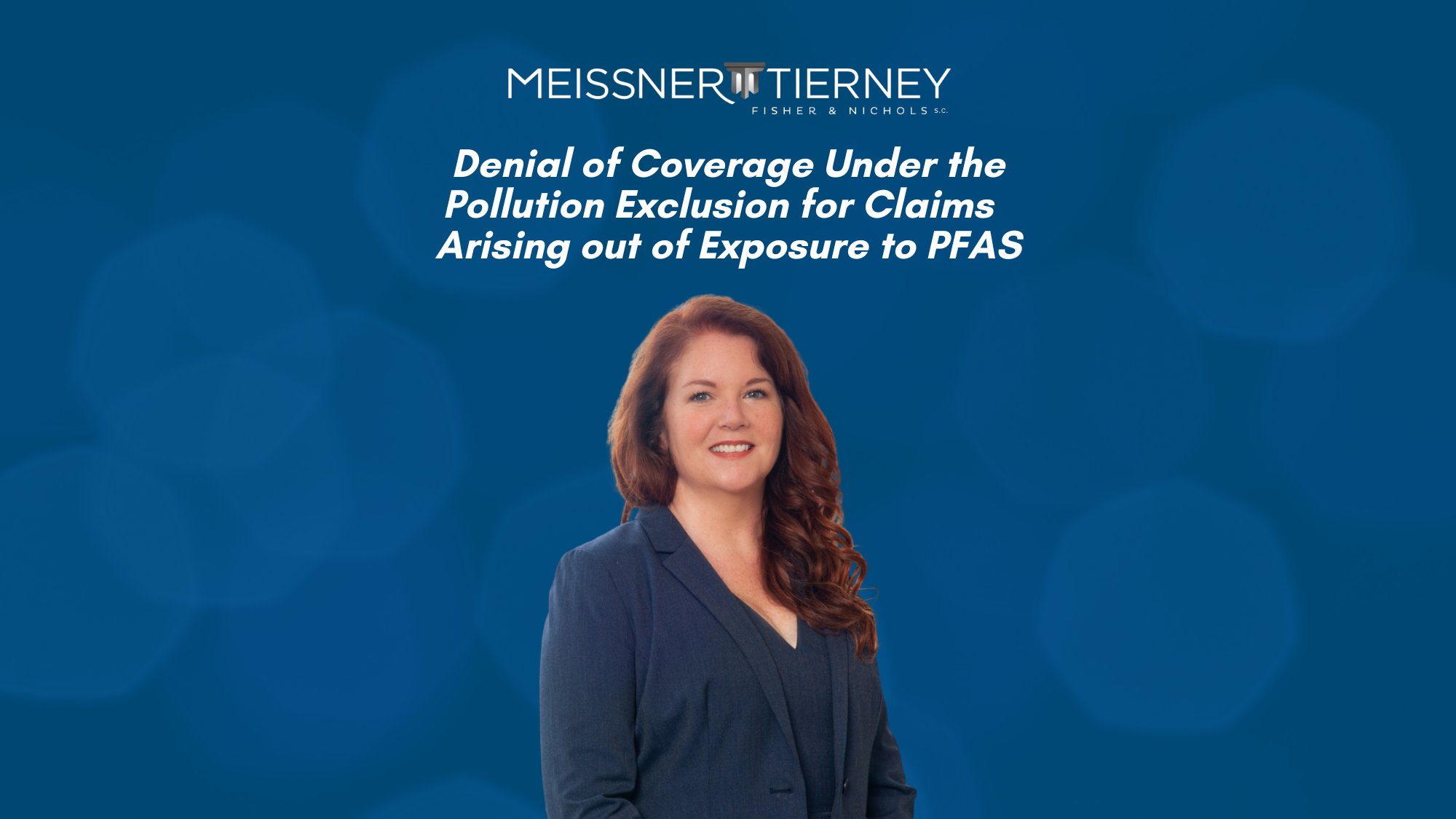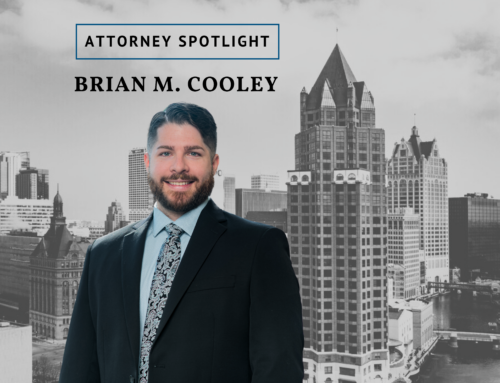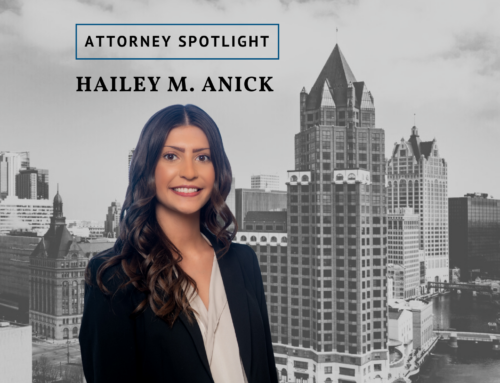The newest “emerging contaminants” of national concern are PFAS — the acronym for thousands of chemicals in the group of perfluoroalkyl and polyfluoroalkyl substances. PFAS are human-made chemicals used in a wide variety of manufactured products in order to resist and repel oil, stains, heat and water, and some studies have associated them with adverse health effects in humans. PFAS are widely referred to as “forever chemicals” due to their persistence and inability to naturally break down in the environment, which has led to thousands of lawsuits by plaintiffs that allege various types of injuries from being exposed to these chemicals in their water supply, food, soil, and from products they have purchased or used occupationally. With the onslaught of this litigation brought against product manufacturers, sellers, suppliers and waste disposers, among others, courts are now being confronted with coverage litigation as to whether insurers have a duty to defend and/or duty to indemnify under policies of liability insurance issued to these various defendants.
Several recent decisions have addressed whether there is insurance coverage available to insureds sued by plaintiffs that claim bodily injury, property damage and other losses for exposure to one or more types of PFAS.[1] While insurers rely on various provisions to contest coverage under the policy, the pollution exclusion is most often the focus of the coverage dispute. The form and breadth of the pollution exclusion utilized by the insurance industry has changed over time since it first emerged in the early 1970s as the “sudden and accidental” pollution exclusion.[2] In the ensuing years, insurers eliminated the sudden and accidental exception and instead adopted broader versions that sought to unambiguously encompass pollutants that were released or discharged in a wide variety of contexts. As a result, the emergence of the Absolute Pollution Exclusion in 1986 and the Total Pollution Exclusion in 1988 are generally closer to the forms utilized in current liability policies today.[3]
Regardless of the form of these exclusions, recent decisions addressing insurance coverage have upheld application of the pollution exclusion in the PFAS context. Most recently, a Georgia federal court in Grange Insurance Co. v. Cycle-Tex, Inc. held that a Total Pollution Exclusion (“TPE”) in a liability policy precluded coverage for a thermoplastics recycling company sued in a putative class action that alleged numerous defendants — including chemical suppliers and manufacturers, municipalities and waste authorities — contributed to or caused the discharge of harmful PFAS into the North Georgia waterways, resulting in injuries to surrounding residents.[4] The putative class alleged claims against the insured, Cycle-Tex, for willful, wanton, reckless or negligent misconduct, negligence per se, punitive damages and public nuisance and abatement and sought damages for (1) alleged harm to their health by virtue of ingesting PFAS-contaminated water; (2) alleged property damage caused by the contamination of the city’s water supply; and (3) the payment of surcharges and heightened water rates as a result of the contamination. At the time that the insurer, Grange, filed the coverage action to contest coverage, it was providing Cycle-Tex with a defense in the putative class action under a complete reservation of rights.
The TPE in the Grange liability policy provided that the policy did not apply to “’bodily injury’ or ‘property damage’ which would not have occurred in whole or part but for the actual, alleged or threatened discharge, dispersal, seepage, migration, release or escape of ‘pollutants’ at any time.”[5] The TPE also barred coverage for “any loss, cost, or expense arising out of any … request, demand, order or statutory or regulatory requirement that any insured or others test for, monitor, clean up, remove … or in any way respond to, or assess the effects of ‘pollutants.’” Finally, “pollutants” were defined, in part, as “any solid, liquid, gaseous or thermal, irritant or contaminant, including smoke, vapor, soot, fumes, acids, alkalis, chemicals, and waste.”
Ruling in favor of the insurer, the court in Grange determined that the TPE excluded coverage for the putative class action brought against Cycle-Tex. It held that there was “no doubt” that the PFAS chemicals — which were alleged to have contaminated the City of Rome’s water supply — are “pollutants” as defined in the policy. Not only did the court point to the use of “chemicals” explicitly within the definition of “pollutants”, but also to the broad and expansive reach of what has been deemed a “pollutant” by Georgia courts. In other words, prior cases that found substance such as lead, storm water runoff, welding fumes and dust to be “pollutants” further reinforced the conclusion that PFAS chemicals allegedly ingested by the putative class, and resulting in bodily injury and property damage, fell within the ambit of the TPE.
The court also addressed whether the payment of surcharges and heightened water rates were excluded by another section of the TPE given that such damages were distinct from “bodily injury” and “property damage.” It focused on the language in the TPE that excluded coverage for losses arising out of any “request, demand, order … or regulatory requirement that any insured or others test for, monitor, clean up, remove” or otherwise respond to the effects of “pollutants.”[6] The putative class alleged that the city implemented an emergency temporary filtration system in response to new health advisories implemented by the Environmental Protection Agency (“EPA”), and that it had to take action to protect the health and safety of the community caused by the alleged public nuisance. Based on these allegations, the court in Grange held that “it is a reasonable inference” that the city implemented the new filtration system, and higher surcharges and water rates, to both (1) achieve compliance with environmental laws and regulations; and (2) in response to “demands and requests” that it protect its citizens from a dangerous public nuisance. Accordingly, these alleged damages were also excluded by the TPE and Grange had no duty to defend or indemnify the insured for this action.
Another recent decision, decided by the supreme court of New York, appellate division, upheld the application of an Absolute Pollution Exclusion (“APE”) and a Qualified Pollution Exclusion (“QPE”) to allegations involving environmental exposure to and injuries from PFAS chemicals.[7] In Tonoga, Inc. v. New Hampshire Insurance Co., the insured, Tonoga, utilized various types of PFAS in its product manufacturing process that were disposed of and ultimately made their way into the Town of Petersburg’s drinking water supply. The Department of Environmental Conservation (“DEC”), the state equivalent of the EPA, declared the insured’s facility a Superfund site and ordered it to engage in certain remedial measures. Tonoga was also sued in multiple lawsuits by various residents and businesses that alleged bodily injuries and property damages caused by the insured polluting the local water supplies, air and soil with PFAS.
Tonoga filed suit against its insurers, Granite State and New Hampshire, to pursue coverage for the lawsuits and its dealing with the DEC under its historic generally liability policies issued at various periods between 1979 to 1987. The trial court granted the insurers’ summary judgment motions finding no coverage under the APE and QPE, and Tonoga appealed.
The court in Tonoga held that the PFAS chemicals unambiguously constitute “pollutants” within the meaning of both the APE and QPE. It disagreed with the insured’s contentions that the substance had to be specifically named as a pollutant in the policy and that the “substance was understood to have a detrimental effect on the environment at the time the policy was entered into or whether pollution was an intended result.”[8] According to the court, it was clear that the manner in which the PFAS chemicals were disposed of at the facility fell squarely within the broadly-dispersed environmental harm that such pollutions exclusions were meant to exclude. It did not matter to the court whether the insured and its employees who disposed of the PFAS knew at the time that such chemicals were potentially harmful or that their disposal was polluting the environment.
The court conducted further analysis of the QPE given the sudden and accidental exception that could have brought the claims back into coverage to the extent the discharge was deemed to be “sudden and accidental.” These terms have largely been interpreted by various state courts, including New York, to mean that the insured has the burden of demonstrating that the discharge was both abrupt, in the temporal sense, and unintentional. However, despite the insured’s examples that the PFAS chemicals were improperly “dumped” and “spilled” down drains, the court found that the allegations instead exemplified environmental pollution over a period of many years “suggests the opposite of suddenness” and “unintended.” As a result, coverage was excluded under both the APE and QPE. [9]
The decisions in both Grange and Tonoga arguably represent application of pollution exclusions in a more “traditional” environmental context in light of the fact that the alleged injuries were caused by environmental exposure to PFAS chemicals that made their way into water supplies, air and soil. It is unclear whether courts will apply the pollution exclusion to claims that allege direct exposure to a product containing PFAS, such as the hundreds of lawsuits filed by firefighters alleging injuries from PFAS through the use of aqueous film-forming foam (“AFFF”) in fighting fires or in firefighting gear. In 2020, a North Carolina federal court in Colony Insurance Co. v. Buckeye Fire Equipment Co., refused to exclude coverage under a Hazardous Materials Exclusion (“HME”) for hundreds of underlying lawsuits filed against the insured, Buckeye, relating to its manufacture of fire equipment containing AFFF. [10] Similar to the TPE, the HME excluded coverage for injuries which would not have occurred in whole or in part for the “discharge, dispersal, seepage, migration, release or escape of ‘hazardous materials’ at any time.” Further, “hazardous materials” was specifically defined to include “’pollutants’, lead, asbestos, silica, and materials containing them.”
Certain of the actions alleged exposure solely arising from environmental exposure, which the parties stipulated that Colony had no duty to defend. However, approximately one-third alleged harm from both environmental exposure and direct exposure to the insured’s products.[11] Thus, the coverage issue was whether Colony had a duty to defend Buckeye in these actions alleging some direct product exposure. Applying North Carolina law, the court refused to apply the HME due to case law that held an insurer may not deny coverage to an insured under a pollution exclusion for injuries that are not “the prototypical environmental harms that a pollution exclusion clause is generally intended to protect against.” Because one-third of the actions alleged injuries caused by both traditional environmental pollution and exposure to AFFF, Colony had a duty to defend Buckeye in those action.[12]
Application of pollution exclusions to PFAS exposures is still in its infancy, but will likely develop at a rapid pace in the next several years. Some courts have already denied coverage pursuant the plain language and broad expanse of the exclusion. Courts, depending upon the nature of the allegations and strictness of its applicable law, may likely continue to follow past precedent in deciding coverage issues in the PFAS context. For states whose laws do not limit application of the pollution exclusion exclusively to traditional environmental exposures, coverage for direct product exposure to PFAS remains an open issue. Whatever the circumstances, coverage in the PFAS context will continue to be highly anticipated and carefully watched by both insureds and insurers alike.
–
[1] See, e.g., Grange Ins. Co. v. Cycle-Tex, Inc., Case No. 4:21-cv-00147-AT (Dec. 5, 2022); Tonoga, Inc. v New Hampshire Ins. Co., 201 A.D.3d 1091 (2022); Crum & Forster Specialty Ins. Co. v. Chemicals, Inc., Case No. H-20-3493, 2021 WL 3423111 (S.D. Tex. Aug. 5, 2021); Colony Ins. Co. v. Buckeye Fire Equipment Co., Case No. 3:19-cv-00534-FDW-DSC, 2020 WL 6152381 (Oct. 20, 2020).
[2] See Penny R. Warren, “Sudden and Accidental” Pollution Exclusions: The Battle Between Insurance Carriers and Insureds Continues, 12 J. Nat. Resources & Envtl. L. 243 (1997). The sudden and accidental pollution exclusion, also referred to as the qualified or conditional pollution exclusion, generally excluded coverage for bodily injury and property damage arising out of the discharge, dispersal, release or escape of smoke, vapors, soot, fumes, acids, alkalis, toxic chemicals, liquids or gases, waste materials or other irritants, contaminants or pollutants into or upon land, the atmosphere or any water course or body of water; except that this exclusion does not apply if such discharge, dispersal, release or escape is sudden and accidental.
[3] See § 8:4. History of the absolute and total pollution exclusions: Before the exclusion; reason for the absolute pollution exclusion; policyholders allege deception, 2 Envtl. Ins. Litig.: L. and Prac. § 8:4 (2023).
[4] See Grange Ins. Co. v. Cycle-Tex, Inc., Case No. 4:21-cv-00147-AT (Dec. 5, 2022).
[5] Cycle-Tex did not appear in the action, and no party opposed the summary judgment filed by the insurer, Grange Insurance Co. Nonetheless, the court found that a lack of opposition did not automatically entitle Grange to summary judgment, and instead considered the merits of its motion.
[6] Emphasis in original.
[7] Tonoga, Inc. v New Hampshire Ins. Co., 201 A.D.3d 1091 (2022).
[8] 201 A.D.3d at 1096.
[9] Tonoga filed a petition for review to the New York Court of Appeals (New York’s highest court), which was denied by order dated May 26, 2022.
[10] Colony Ins. Co. v. Buckeye Fire Equipment Co., Case No. 3:19-cv-00534-FDW-DSC, 2020 WL 6152381 (Oct. 20, 2020), aff’d, slip op. at 2021 WL 5397595 (4th Cir. Nov. 18, 2021) (unpub.).
[11] For example, one of the underlying complaints containing both types of exposures alleged that “[d]uring [underlying plaintiff’s] employment as a firefighter and firefighter instructor, he was significantly exposed to elevated levels of PFOS and PFOA in their concentrated for as a result of regulate contact with defendant’s AFFF products and through PFOS and PFOA having contaminated the Fire College well system.” (Emphasis in original).
[12] Another coverage action, entitled Admiral Insurance Co. v. Fire-Dex, LLC, Case No. 1:22-cv-01087, was filed in 2022 in the District Court for the Northern District of Ohio, and sought a determination of coverage pursuant to a Total Pollution Exclusion and an Occupational Disease Exclusion, among other provisions, in Admiral’s policies for underlying lawsuits filed by firefighters that alleged they contracted cancers because they were occupationally exposed to PFAS in the insured’s firefighting gear. By decision and order dated October 31, 2022, the action was dismissed for lack of subject matter jurisdiction because an Ohio state court is the preferred forum for resolution of “these novel questions of law”. (Doc. # 21, PageID # 606). On November 28, 2022, Admiral filed a notice of appeal with the Sixth Circuit.






